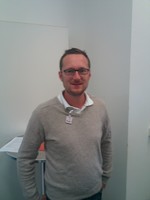Article,
Extensions to the time-oriented database model to support temporal reasoning in medical expert systems
Methods Inf Med, 30 (1): 4-14 (1991)
Abstract
Physicians faced with diagnostic and therapeutic decisions must reason about clinical features that change over time. Database-management systems (DBMS) can increase access to patient data, but most systems are limited in their ability to store and retrieve complex temporal information. The Time-Oriented Databank (TOD) model, the most widely used data model for medical database systems, associates a single time stamp with each observation. The proper analysis of most clinical data requires accounting for multiple concurrent clinical events that may alter the interpretation of the raw data. Most medical DBMSs cannot retrieve patient data indexed by multiple clinical events. We describe two logical extensions to TOD-based databases that solve a set of temporal reasoning problems we encountered in constructing medical expert systems. A key feature of both extensions is that stored data are partitioned into groupings, such as sequential clinical visits, clinical exacerbations, or other abstract events that have clinical decision-making relevance. The temporal network (TNET) is an object-oriented database that extends the temporal reasoning capabilities of ONCOCIN, a medical expert system that provides chemotherapy advice. TNET uses persistent objects to associate observations with intervals of time during which än event of clinical interest" occurred. A second object-oriented system called the extended temporal network (ETNET), is both an extension and a simplification of TNET. Like TNET, ETNET uses persistent objects to represent relevant intervals; unlike the first system, however, ETNET contains reasoning methods (rules) that can be executed when an event "begins", and that are withdrawn when that event "concludes". TNET and ETNET capture temporal relationships among recorded information that are not represented in TOD-based databases. Although they do not solve all temporal reasoning problems found in medical decision making, these new structures enable patient database systems to encode complex temporal relationships, to store and retrieve patient data based on multiple clinical contexts and, in ETNET, to modify the reasoning methods available to an expert system based on the onset or conclusion of specific clinical events.
